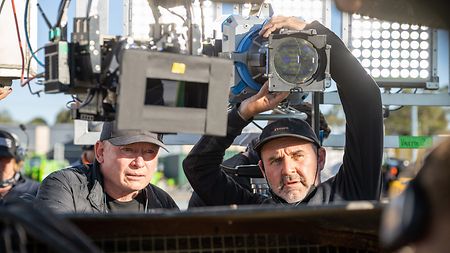“Furiosa: A Mad Max Saga” is the fifth film in the Mad Max canon and is set two decades before the events depicted in 2015’s “Mad Max: Fury Road.” It is the first of the films not to center on the character of Max Rockatansky, instead telling the origin story of Furiosa, played by Charlize Theron in “Fury Road” and now by Anya Taylor-Joy in “Furiosa.” Simon Duggan ASC, ACS is the fourth cinematographer of the franchise and was tasked with continuing the bold, colorful, and kinetic look of director George Miller’s visionary dystopia, where savage, vehicle-based battles are fought in the lawless Australian outback. Duggan speaks here about his work on the movie, which was supplied with ARRI Rental ALEXA 65 cameras and DNA lenses through Panavision Australia.
What were the new elements at play in this fifth Mad Max adventure?
“Furiosa” expands on several elements established in “Fury Road” – the post-apocalyptic barren wasteland; the fortress of The Citadel and its inhabitants, ruled by Immortan Joe; and the War Rig battle truck and other vehicles. It is a more complex story about Furiosa’s journey, starting from the time when she is abducted as a child from the Green Place. We also establish the new character of Dementus and his marauders, and the new satellite towns of Bullet Farm, which supplies ammunition, and Gas Town, which is an oil refinery. The new locations and characters add a further dimension to the story, expressed through the production design, color palette, and lighting style.






